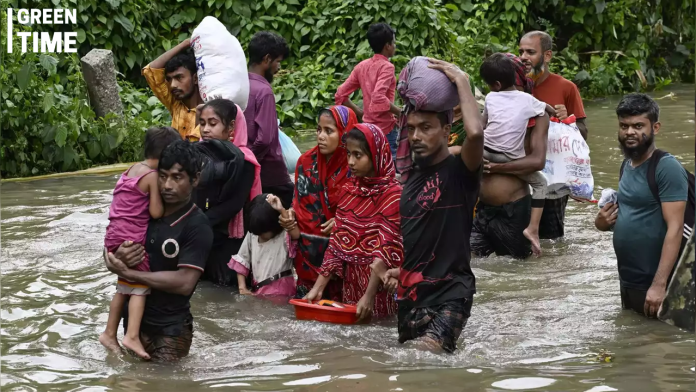The sudden flooding that hit the southeastern districts of Bangladesh, including Feni, Noakhali, Lakshmipur, Comilla, and parts of the Chittagong Hill Tracts, has lingered for over a week now. Despite the water levels gradually receding, many areas remain submerged, leaving a significant number of people stranded. The slow drainage of floodwaters has raised concerns among river experts about the region’s topography and the adequacy of its water management infrastructure.
Professor Md. Munsur Rahman from the Bangladesh University of Engineering and Technology (BUET) attributes the prolonged flooding to recent land reclamation activities in the affected regions. “Key canals and drainage networks have been partially or completely damaged due to land recovery for economic zones and other development projects,” he explained. This disruption in natural water flow has contributed to the delayed recession of floodwaters.
A joint study conducted by researchers from BUET, Bangladesh’s Water Resources Planning Organization (WARPO), the University of East Anglia, the University of Southampton in the UK, and Utrecht University in the Netherlands, published in 2022, sheds light on the geomorphology of Bangladesh’s coastal areas. The study, which appeared in the international journal Science of the Total Environment, highlighted that 22 to 50 percent of the sediment carried to the Meghna estuary accumulates on land, impacting the area’s water drainage capabilities.
Further compounding the problem are man-made structures like the Muhuri sluice gate, constructed in 1985, and the Musapur cross-dam, built in 2015, on the Feni River. These structures have significantly impaired water drainage, according to the researchers, further exacerbating flooding in the region.
Mominul Haque Sarker, an advisor to the Center for Environment and Geographic Information Services (CEGIS), which operates under the Ministry of Water Resources, noted that the topography of Noakhali, Feni, and Lakshmipur is largely flat and composed of soft, recently deposited sediments. Unlike the flood-prone regions of Sylhet, where water quickly spreads out into the haor wetlands, or the Chittagong Hill Tracts, where water swiftly flows down the slopes, these areas have no such drainage advantages.
As of now, the Disaster Management and Relief Ministry reports that 27 people have lost their lives due to the flooding, and more than 5.6 million people have been affected. Over 1.2 million families remain waterlogged.
The Flood Forecasting and Warning Centre of the government has indicated that water levels in most rivers in the eastern region have begun to fall, following a decrease in rainfall in Feni, Comilla, and upstream in Tripura, India. However, further rainfall is expected between August 29-30, which may bring additional but less severe flooding compared to the current situation.
Moving forward, experts emphasize the need for improved water management systems in the region to prevent similar prolonged flooding in the future.

